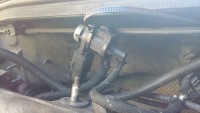Hello, the lack of power problem.
I have already replaced the valves and still no power. However, I checked that the barbell from the pear and the barbell from the extinguishing flap did not move during firing. In comp. Shows undercharging, TC fault valve.
I have no idea what to do next. Lubricate the N75 valve, I replaced the hoses.
I have already replaced the valves and still no power. However, I checked that the barbell from the pear and the barbell from the extinguishing flap did not move during firing. In comp. Shows undercharging, TC fault valve.
I have no idea what to do next. Lubricate the N75 valve, I replaced the hoses.



